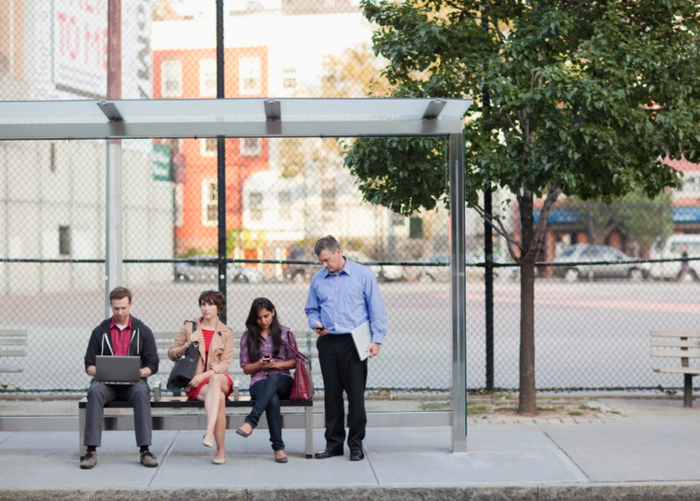How IoT Could Help Chicago Combat ViolenceHow IoT Could Help Chicago Combat Violence
The Windy City is using a high-tech approach to curb shootings.
April 11, 2017

By Jordan Brandes
On March 30, 2017, the 19-year-old gang member Maurice Harris walked into the Nadia Fish and Chicken restaurant in Chicago’s South Shore neighborhood. A “hail of gunfire” ensued, according to eyewitnesses, and four people ultimately died. Though he has not confessed to the murder, three witnesses have identified Harris as the perpetrator. Just the day before, his father was gunned down nearby, prompting police to believe that Harris acted out of revenge. His father had been arrested some four dozen times including twice for murder. And Harris, although just barely an adult, already has an extensive rap sheet.
As atrocious as these attacks are, they have become commonplace in Chicago. Though homicides have been down in 2017, the number of shootings has actually increased, according to data collected by the Chicago Tribune. As of early April, at least 495 people have been shot in the Windy City, up more than 60 from the same time last year.
The situation has earned criticism from President Donald Trump, who in January said Mayor Rahm Emanuel needs to “smarten up and toughen up” how it fights gun violence. Shortly after that, Emanuel convened a press briefing to showcase how city officials plan to use new police cameras and gunshot tracking technology.
Tech-Enabled Crime Fighting
To fight violence, the city is embracing technology, explains Jonathan Lewin, deputy chief, Bureau of Support Services, Chicago Police Department. “Chicago PD has a variety of assets that are remotely connected using a variety of connection methods, ranging from commercial cellular to direct fiber connection using the city’s Internal Secure Communications Network. These assets include surveillance cameras, in-vehicle mobile computers, license plate recognition devices (both vehicle-mounted and fixed), smartphones and tablets, GPS units on police vehicles, and sensors such as ShotSpotter gunshot detection.”
The ShotSpotter technology can help police pinpoint gunfire in near real time, also giving officers access to predictive data for high-crime neighborhoods.
[The topic of smart cities will be featured at Enterprise Internet of Things World in Chicago this October. The event will be co-located with the Smart Cities Summit.]
ShotSpotter is an example of how Chicago is making the city safer is through Internet of Things technology. “IoT should be important to any city,” notes Don DeLoach, co-chair of the Midwest IoT Council. “The possibilities for enhancement can create a better climate for a more efficient government when it comes to everything from restaurant inspection to monitoring transportation patterns.”
One of the many programs the city uses is called the CityGrid, which provides situational awareness and incident monitoring, historical data retrieval, and real-time advanced analytics. From a user’s perspective, the application begins with a homepage that gives them the ability to specify searches by data type, time, and location (at either a given geographical point or customized general area). This means that, by performing a search, users can instantly understand the history of car crashes at a given intersection, or visualize in real-time the volume of non-emergency 311 calls happening within the radius of a given incident.
The SmartData predictive analytics platform makes this type of functionality possible. Since SmartData consists of computer algorithms and processes, WindyGrid’s user-friendly interface unofficially serves as the first example of SmartData’s “face” to the end user.
But that’s not the only application the city is running with an IoT bent. “Mayor Emanuel has announced the Chicago Smart Lighting Project, which will replace outdated lamps with energy efficient LED lights that will also be accessible through a wireless management system to provide real-time updates on outages and to be able to remotely control lighting intensity, for example,” Lewin notes. “All of these networked assets are connected, monitored, and managed remotely and integrate with an advanced situational awareness framework that informs tactical and strategic decision-making to identify and intervene with crime and quality of life issues.”
Chicago’s Array of Things
Another key program is the Array of Things, a network of interactive, modular sensor boxes installed around Chicago to collect real-time data on the city’s environment, infrastructure, and activity. AoT will serve as a “fitness tracker” for the city, measuring factors that impact livability in Chicago such as climate, air quality, and noise, providing data for research and public use.
The city will mount a total of 500 nodes on streetlight traffic signal poles around the city by the end of 2018. Once that is completed, the AoT team will work with several partners, including the Chicago’s Department of Information and Technology and Department of Transportation, researchers, neighborhood groups and community members, to determine the best locations for the deployment of AoT. Data collected by AoT will be open, free, and available to the public.
The nodes will transmit data to a secure central database server at Argonne National Laboratory. Data will then be published openly to allow individuals, organizations, researchers, engineers and scientists to study urban environments, develop new data analysis tools and applications, and inform urban planning. Raw data will also be posted to the City of Chicago’s open data network and Plenario, a web-based portal that supports open data search, exploration, and download with open datasets from Chicago and around the world. “By correlating data across systems, it becomes an IoT organization,” DeLoach explains.
Chicago is currently in the process of data correlation on a massive scale. With programs like Array of Things and WindyGrid already in place, the city is getting more connected every day. But Chicago always has an eye on the future. “I see the Midwest becoming the premiere area where IoT happens,” DeLoach continues. “I do think there’s a network effect that can help everyone and what we end up doing here will help other cities as well.”
The latest program to roll out of the Chicago Police Department is the ShotSpotter system. ShotSpotter uses acoustic sensors to identify and locate gunshot events. It provides three primary advantages: improved detection and alerting speed (several minutes faster than the first citizen call to 911), better location accuracy (to 25 yards or better), and a complete picture of gunshot events in the coverage area—because citizens don’t always call 911 for every gunshot. ShotSpotter alerts are available on desktop computers at police districts, at headquarters, and on smartphones provided to police officers for immediate alerts in the field.
“ShotSpotter has been expanded from an original small coverage area of 3 square miles, implemented in 2012, to two entire police districts (007 and 011) which together account for almost 25% of the citywide shooting incidents. It will soon expand to four additional areas (006, 009, 010, 015) for a total of 47 square miles. When complete, the covered geography will account for almost 55% of the citywide shooting incidents,” notes Lewin.
The city of Chicago is aware of its violent reputation, but each year new technology is taking steps to change the course of violence in Chicago. As Mayor Emanuel told the Chicago Tribune earlier this year: “Crime and violence present a complex problem that has to be dealt with in complex ways.”
You May Also Like






